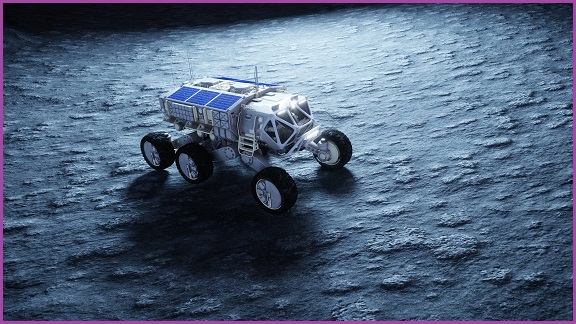An Australian-made semi-autonomous rover will be part of a NASA mission to the Moon and will help collect lunar soil for oxygen extraction to support NASA’s long-term human presence off-world.
The government announced the rover project on Wednesday, saying it will be developed by a consortium of local business and research organisations with a $50 million backing from taxpayers.
Newly crowned Minister for Science and Technology, Melissa Price, said the project creates Australia’s “own lunar history”.
“As well as putting Australia front and centre for scientific discoveries, our $50 million in support gives Australian businesses and researchers the opportunity to contribute to NASA’s mission to the Moon and beyond,” Price said in a statement.
“It will build the Australian space sector’s capability and capacity and showcase Australia’s strengths to the world, as well as inspire a whole new generation of young people to enter careers in science, technology, engineering and maths.”
The rover will help provide ‘foundation services’ for NASA’s Moon to Mars program, which is to say it’ll scoop up rocks and dust from the lunar surface for NASA to process with its in-situ resource utilisation (ISRU) system.
ISRU is the practice of generating products needed for further space exploration – such as extracting oxygen, drinking water, and rocket propellant – from local materials like lunar soil.
NASA described Australia’s role in the mission as a “complementary” one since its planned commercial lunar lander will also be able to collect and deposit regolith into the ISRU system.
“The [Australian] rover offers a second means of collection and increases the overall chances of a successful demonstration,” NASA said in a press release.
Australia’s lunar rover won’t touch down until at least 2026, two years after NASA is planning on sending out its next generation lunar astronauts which will include the first woman on the Moon.
Still, both countries are hailing Australia’s involvement as a success story designed to demonstrate the technological ties which were strengthened by the recent trilateral AUKUS partnership.
NASA Administrator Bill Nelson said the rover agreement “strengthens” the space exploration relationship between Australian and the US.
“By working together with the Australian Space Agency and our partners around the world, NASA will uncover more discoveries and accomplish more research through the Artemis program.”
Prime Minister Scott Morrison meanwhile described it as “an incredible opportunity for Australia to succeed in the global space sector”.
The opposition was naturally welcoming of Australia’s minor part in NASA’s ambitious plans to establish a permanent base on the moon, but said the government needed to provide more support for the local science and technology industry beyond “shiny headlines”.
“For years, Australian businesses and organisations have had the capability and knowledge to get Australia to the moon. The only thing lagging was Federal Government support,” Shadow Science Minister Richard Marles said.
“We need to be a country which celebrates science and today’s announcement is a small part of that.”
As the US government is ready to pour US$20 billion a year into its Moon to Mars project, Australia has promised to contribute $150 million over five years – a third of which is apparently going toward the complementary lunar rover.
In Wednesday’s announcement, Morrison bragged about investing “more than $700 million in the civil space sector since July 2018” yet the first round of its $1.5 billion modern manufacturing initiative saw just $14 million invested in space technology projects.










